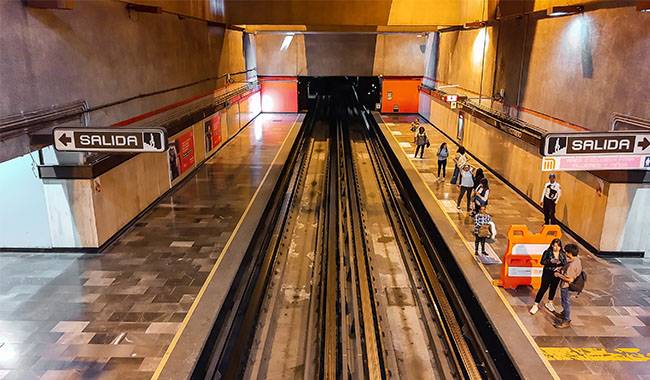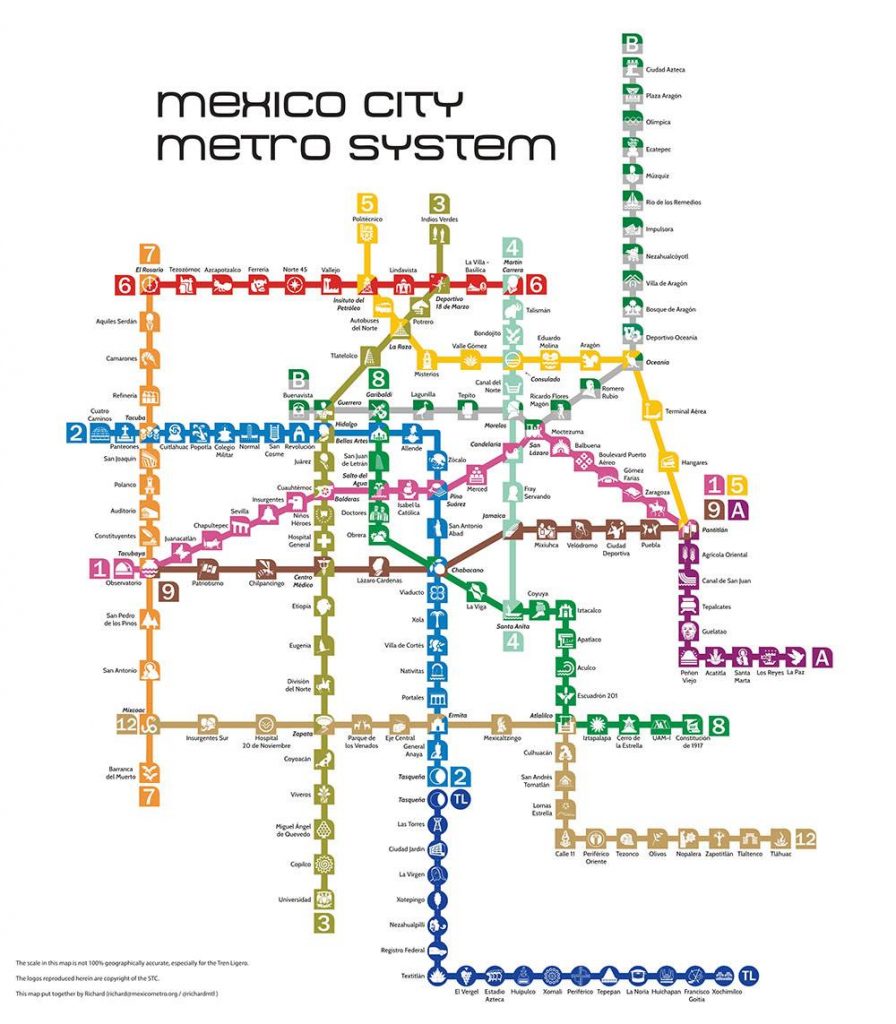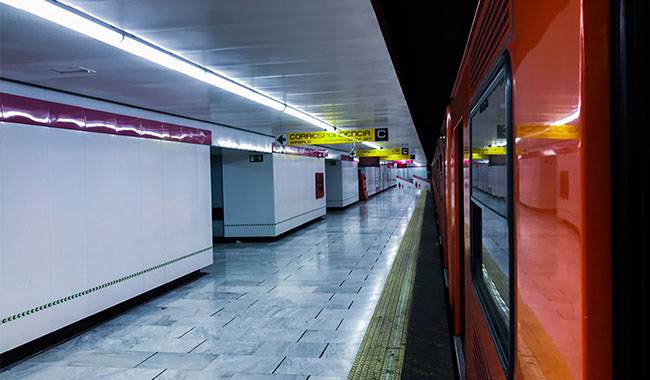
One of the main means of transportation in large cities is undoubtedly the subway, and Mexico City is no exception. Riding the Mexican subway is a pleasure, mainly because you don’t get into rush hour. But first things first. In this article, we will study the Mexican subway with the website LCNOutdoors.
Description, Prices, Opening Hours
The official name of the Mexico City Metro is Sistema de Transporte Colectivo (Public Transportation System). There are 12 lines underground, all with their own color and a letter or number name. Ten stations are numbered (lines 1 to 9 and 12) and the tenth and eleventh lines correspond to lines A and B. From the north to the south of the city, we arrived in about an hour and a half on line 3, which consists of 20 stations.
There are both underground and above-ground lines, and then there is the Metrobus, a bus that also follows dedicated routes (these are painted on the underground scheme).
Metrobus tickets cost 3 pesos and are free for over 60s and disabled people. You can buy a one-way ticket card for each trip, or a rechargeable MetroCard for 10 pesos. Female parents, students, and unemployed people can get a discounted ticket for 40 subway trips for 3 pesos in 6 months. On some lines, only the card can be used, such as the new 12th line. There are no discounts available.
On weekdays, the subway is open from 5 a.m. to midnight, on Saturdays from 6 a.m., and on Sundays and public holidays – from 7 a.m. If you plan to get somewhere early, it’s a good idea to check in advance if Mexicans are celebrating a holiday in honor of Mary of Guadalupe or someone else.
Mexico City’s subway is very, very easy to use; it only takes one ride to master it. There are plenty of street signs at each station.
You will need to learn a few words in order to use the underground system with confidence.
Basic Mexican Subway Terms
Taquilla – cash register
Salida – exit
Entrada – entrance
No pase – no pass
Andenes – platform
Direction – direction
To go somewhere, you need to know the station you are going to and the name of the terminal of the line you are going to. For example, we need to go from Hidalgo station (Mexico City) – (swamp colored line 3) to Chapultepec station (pink line 1). From Hidalgo station, we take three steps to Balderas (the intersection of the pink and swamp lines) towards Universidad (the end of line 3 in the direction we want to go). Then from Balderas, we go to Chapultepec station, in the direction of (direction) Observatorio. That’s it.
Metro map of Mexico City

Features of the Mexican Subway

There are some peculiarities of the Mexico City subway that I have not seen anywhere else before. First of all, all the station names are repeated with graphic images of animals, people, plants, and other signs. This was done for Mexicans who have not yet learned to read, and statistically, there are very, very many of these people.
Second, Mexico City’s underground system is partially tire-driven (rubber wheels hide the regular iron wheels). It’s not clear why this is done, but it seems unusual.
Third, during rush hour, the first three cars of the train are reserved for women and children under 10 years old. These are for women who don’t want to deal with the crush of unreasonable males (which I understand does happen). Those who were more daring or didn’t mind the attention could ride in the general carriages as usual.
Fortunately, we didn’t get stuck in congestion, but we had to travel when it was fairly crowded. It wasn’t the most pleasant thing: while you could still squeeze into the carriage (not always in the first place), getting off at the right station was more difficult because people started getting on as soon as the doors opened, sometimes with the help of the police – who pushed passengers in on their elbows and knees.
I can’t even imagine what happens when the train arrives …… Luckily we had to go in the opposite direction.
Overall, the subways in Mexico City are clean, well maintained, and comfortable to use (unlike the subways in NYC, etc.). All stations are full of stalls and stores, confectioners, and other bubble gum vendors. There were also beggars, but they were few and far between and out of the way.
The carriages all look the same and are painted a cheerful orange. It was very Mexican. There may be others that I didn’t see.
Many of the underground stations and passages were decorated with a very interesting and quality look reminiscent of the underground in Moscow. The carriages also look quite nice. As with all subways, there are various advertisements all over the walls. Passengers are also greeted by a large number of advertisements on the walls, perhaps in every subway car. From what I noticed, it is not customary to give way to women.
How to Get from the Airport to the City Center by Subway
By the way, I almost forgot the most important thing: from Mexico City’s Benito Juarez International Airport, you can get to the city center by subway. two stations, TerminalAerea and Hangars (yellow line 5), are close to the airport; you need to change to a train. There is only one small thing: if you get on the metro during rush hour, you may be turned away because you are carrying extra luggage (larger than your carry-on). Some people say they don’t let you into the subway at all with large luggage – that is, at any time – which is not true. We drove calmly from the airport to the station we wanted with two not-so-small backpacks and no one said a word to us. It was about 3 pm, not rush hour, which is probably why they didn’t notice us.
That’s it! Have a great trip on the Mexico City Metro!